The Belgian Laekenois Dog is alert, intelligent and protective.
The Belgian Laekenois dog breed belongs to a group of 4 Belgian shepherd dogs. They look remarkably similar to each other, and to the German Shepherd, but they are 4 distinct breeds. The Laekenois is the most rare. It is distinguished by a rough, short shaggy coat in red, grey and fawn. Its coat looks like that of the Irish Wolfhound.

Belgian Laekenois Dog – Temperament
Like most dogs that have a history of herding and guarding sheep, the modern-day Laekenois is reserved with strangers, and will watch an unfamiliar arrival at your home with suspicion.
With enough socialization as a puppy and some obedience training, the Laekenois is a friendly and sociable dog. They are alert and energetic, and need a fair amount of exercise. They enjoy human company and need to feel that they have a job to do.
This means that they are not really suited to apartment life, unless you can devote a significant amount of time to exercising the dog each day. They do better where there is a large fenced yard to run around in, and games to occupy them. They love learning something new, and are ideally suited to advanced training for obedience and herding trials and tests.
They generally do best in a rural setting, or a house with a big yard, where they have room to move and burn off energy.
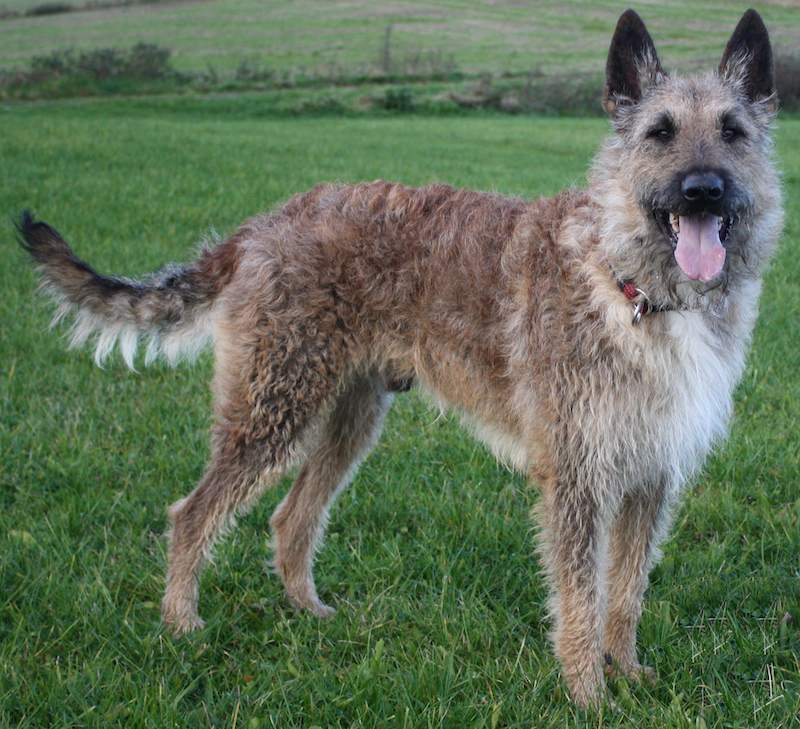
Belgian Laekenois Dog – Breed History
This breed descended from various local sheep dogs that were grouped together by Professor Reul, of the Veterinary School in Brussels.
In 1891, he undertook to differentiate between the 4 shepherd dogs of the land. Although very similar in physical build and temperament, the rough-coated fawn dogs were assigned the name Laekenois, after the town of Laeken.
The other dogs in the group are the Belgian Malinois, the Tervueren, and the Groenendael (Belgian Sheepdog). Depending on the registry you consult, these four dogs could be either separate breeds or varieties of the same breed that differs only by color and texture of the hair.
Differences between the four Belgian Shepherd dogs
Malinois: Short coat, normally with black mask, and fawn to mahogany in color
Tervueren: Long coat with black mask and fawn to mahogany in color
Laekenois: Rough, shaggy coat that is predominantly fawn
Groenendael (Belgian Sheepdog): Black, Black and White and Long Coat

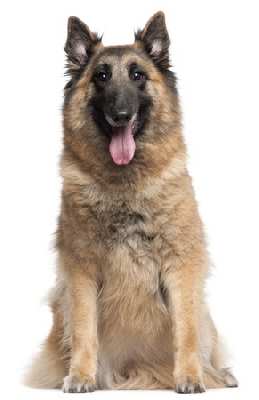
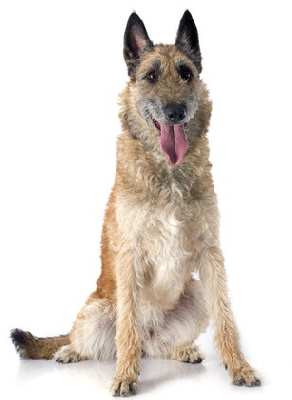
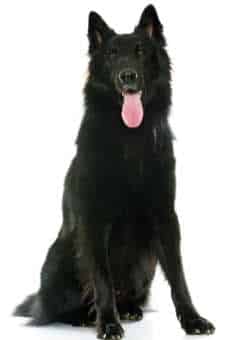
The Belgian Laekenois dog breed is active, agile and energetic. Their intelligence and adaptability meant they could take on the roles of herding and guarding sheep, and were also used to keep watch over drying linen.
All 4 breeds of the group were used as messenger dogs during both world wars. Like many breeds, their numbers were severely reduced after WW2, and it was thanks to the dedication and perseverance of a small number of breeders that the breeds continued to exist.
The Laekenois is not currently recognized fully by the American Kennel Club, where it is classed in the miscellaneous group as a Herding dog. However is IS recognized in the UK, Canada, Australia and in Europe as a Herding or Pastoral breed.
Vital Statistics
Height; 24-26 inches (male), 22-24 inches (female)
Weight; 55 to 65lbs
Life Span; 10 to 12 years
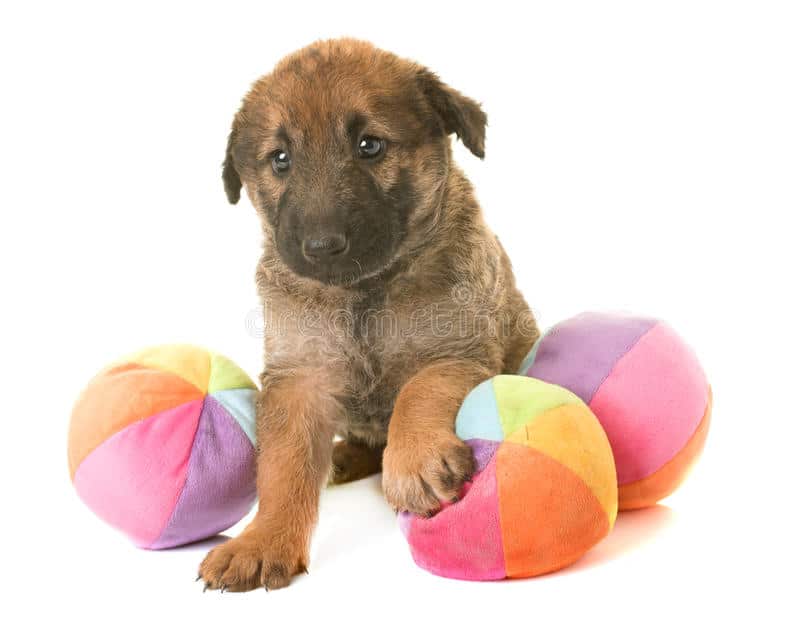
Ease of Training
Highly intelligent and with a strong will to work, the Laekenois wants a job to do, and accepts training very well. They need socialization as a puppy, where they get to meet as many new people and other dogs as possible, to reduce the natural suspicion of strangers.
I recommend puppy training classes, followed by obedience training. This breed can do very well in tests and trials involving herding and obedience, but need extra training with the help of a professional dog trainer to achieve their best. This is a highly trainable breed.
We have an excellent page on the best dog training books.
Protection
The Belgian Laekenois dog is very alert to its surroundings. This is part of its heritage as a herding breed and a guardian breed. They will very quickly let you know if something unusual is happening in your vicinity, by barking until you come to take a look at what’s going on. It makes a great watchdog.
As for being a guard dog, they also do very well. This breed is confident and protective of it’s owner, and at up to 65lbs is able to deter most would-be intruders. If your unwanted guest tries to take things further, the Laekenois will take him on. If you’re looking for protection, it’s cousin the Belgian Malinois may be a better choice, but the Laekenois is not far behind.
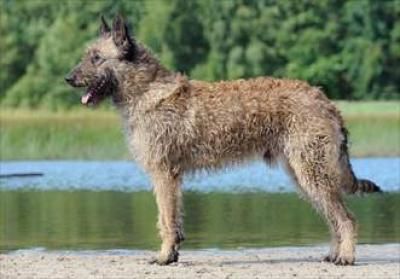
Grooming
The shaggy coat of the Laekenois needs at least a weekly brushing to remove loose hairs. This breed tends to shed regularly, and frequent brushing will reduce the dog hairs around your home!
They normally only need a bath once a month, or less, unless they get very muddy or dirty. The occasional bath reduces the ‘doggy smell’ that can build up with time.
As always, you should check the ears regularly for cleanliness, wax build up and signs of infection such as redness and swelling. The claws should be trimmed when they get too long, which is usually best done by a professional dog groomer or a vet.
Health Considerations
Belgian Laekenois dogs are generally a healthy breed with a lifespan of 12-14 years. The main genetic problems that have been identified in the breed is hip and elbow dysplasia, progressive retinal atrophy (PRA), pannus, cataracts, and epilepsy.
Some tests can be performed on the breeding dogs that will help eliminate some of the problems, so that is why you should always find a reputable breeder who cares about the health of her dogs.
Some of these problems such as elbow dysplasia, for example, may develop due to too much strenuous exercise while still a young puppy. For this reason, training should be paced with plenty of rest times.
Possible health issues include;
- Cataracts
- Epilepsy
- Thyroid Disease
- Progressive Retinal Atrophy
- Hip and Elbow Dysplasia
- Pannus
Famous Belgian Laekenois Dogs
I could not find any famous Belgian Laekenois dogs – please let me know if you are aware one one, using the Contact Me link. Thank you!



